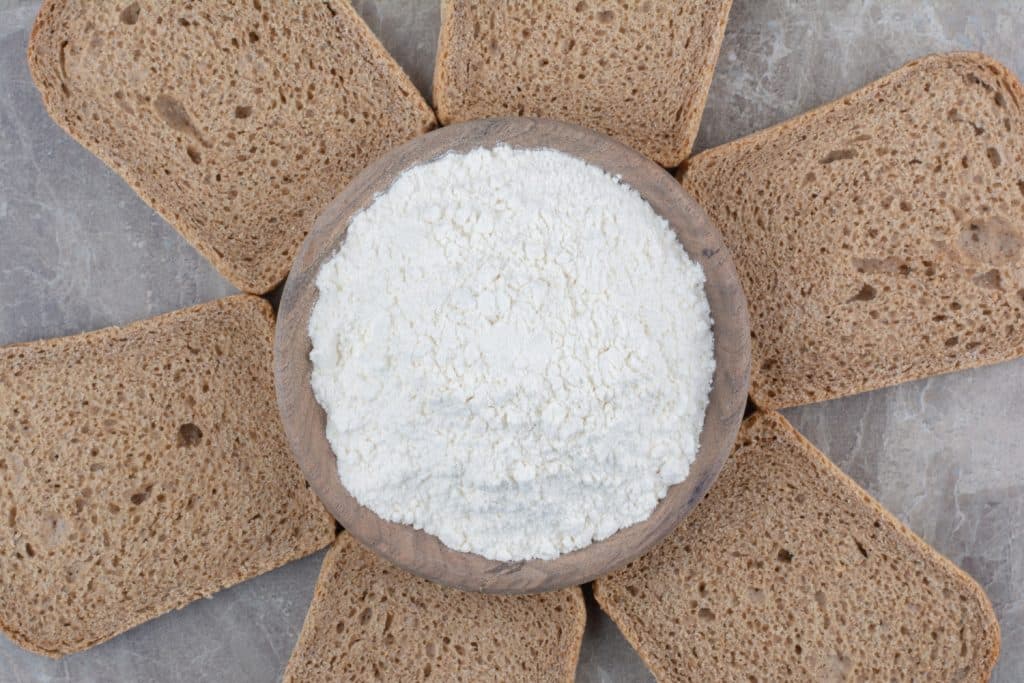Back to blog
⚖️ Weight Management
Psyllium Husk Benefits and Side Effects: Your Complete Guide to Ispaghol

Psyllium Husk Benefits
Psyllium Husk Side Effects
Getting to Know Psyllium Husk
How to Use Psyllium Husk
Psyllium Husk vs Chia Seeds
Healthy Meal Delivery
Psyllium Husk Side Effects
Getting to Know Psyllium Husk
How to Use Psyllium Husk
Psyllium Husk vs Chia Seeds
Healthy Meal Delivery
Looking for a natural way to improve your digestion? You might have heard about the Ispaghol plant, also known as psyllium husk or Ispaghula husk, this humble herb has powerful effects, from gut health reset to appetite control and beyond. In this article, we’ll share everything you should know about psyllium husk benefits and side effects, how to use it, and why this fibre superstar deserves a spot in your pantry.
Psyllium Husk Benefits
What is psyllium husk and why is everyone talking about it? It’s a fibre-rich natural supplement that offers many health benefits, here are some of the benefits you should know about:
- Supports digestion and regulates bowel movements: Using psyllium husk for constipation can be a natural laxative, as it adds bulk and softness to stool, easing constipation and calming diarrhoea.
- Healthy weight loss: Taking psyllium husk for weight loss before meals can be very effective as it expands in the stomach, giving a feeling fullness, reducing cravings and calorie intake. Users often report losing 2–6 kg in 30 days without strict diets.
- Reduces cholesterol: Its soluble fibre helps lower bad cholesterol levels (LDL) and boosts good cholesterol (HDL), making it a great ally for heart health.
- Blood sugar control: Slows down carbs absorption, which smooths out blood sugar spikes, making it helpful for those with type 2 diabetes.
- Digestive health: Supports healthy bowel function and can calm diarrhea.
- Soothes IBS symptoms: Regular use of psyllium husk can reduce bloating and cramps in people with irritable bowel syndrome (IBS).
Read more about Carbohydrates Food Benefits.
Psyllium Husk Side Effects

Though widely beneficial, it can have mild side effects, before adding psyllium husk to your routine, keep these in mind:
- Belly discomfort or cramps.
- Diarrhea.
- Bloating or gas if you’re a new user.
- Nausea or vomiting.
- Allergies; in rare cases.
Getting to Know Psyllium Husk AKA Ispaghol
Ispaghol is the fiber-rich outer shell of the Plantago ovata seed. This core ingredient is what makes the husk so effective. Once inside your body, its high concentration of psyllium husk fiber absorbs water and forms a gel-like substance that expands in the gut. This helps support smooth bowel movements, regulates digestion and promotes a lasting feeling of fullness.
As a well-respected natural supplement, you’ll find psyllium husk powder commonly used in smoothies or water, as well as in Psyllium husk capsules and granules. Sometimes it’s even added to breakfast cereals, oatmeal and baked goods, making it a trusted choice for nutrition and wellness.
How to Use Psyllium Husk

There are multiple ways you can use it, here are some tips on how to use, what dosages to take, when to take it and what you need to watch out for:
Uses and Tips
- If you’re wondering how to take psyllium husk with your drinks, the answer is really simple, just stir one teaspoon of its powder into a full glass of water and drink it before meals.
- Psyllium husk powder can be added to juices and smoothies, however make sure you drink it quickly before it thickens and becomes hard to swallow.
- It can also be used with sparkling water or carbonated drinks, but watch out for extra gas or bloating.
- For capsules, make sure to follow the package instructions and take it with a full glass of water.
- Try psyllium husk recipes like low-carb bread or pancakes, just be sure to account for its thickening power.
Learn about the Top 10 Healthy Juices for Weight Loss.
Doses
- A common dose is 5–10 grams with food once a day, but be sure to drink plenty of water throughout the day to prevent constipation or intestinal blockage.
- If you're just starting out, your body might need some time to adapt. You can try taking 5 grams three times daily, then gradually increase your dose.
Timing
- For weight management: 30 minutes before meals, this can help give you the feeling of fullness leading to minimal food intake.
- For constipation and gut regulation: In the morning or before bedtime.
Reminder: Whether you’re taking psyllium husk with drinks or food, make sure to drink enough water throughout the day to help it do its job and prevent any digestive discomfort, as it can swell and obstruct the intestines.
Psyllium Husk vs Chia Seeds
While both are fiber-rich foods, but psyllium husk forms a more viscous gel, making it better for digestion and cholesterol control. Chia offers nutrients plus a crunchy texture when soaked, making it great for toppings and puddings. Choose psyllium husk for digestive health, chia seeds for nutritional variety.
Healthy Meal Delivery
Want to boost your diet with the power of high fibre foods delivered to your doorstep? Download Calo App today and get the wholesome meal you deserve without compromising the taste! At Calo we offer main dishes, snacks, and baked goods featuring psyllium husk and much more. Clean, balanced and delivered fresh. Smart nutrition is what brings real change.
FAQs
Is psyllium husk gluten free?
Yes, it’s naturally gluten-free and safe for those with celiac or gluten sensitivities.
How to take psyllium husk powder in recipes?
Use 1–2 tablespoons in baking (like bread or muffins) or stir it into oatmeal or yogurt. Just add more liquid since it thickens quickly.
Are psyllium husk capsules better than powder?
Capsules are more convenient on the go, but powder may be more cost-effective and easier to adjust doses.
What’s the difference between psyllium seeds and husks?
Husks are the most commonly used and effective form, they contain a higher fiber content than the whole seeds.
Can I take psyllium with other medications?
It’s better to avoid taking them at the same time, as psyllium may slow the absorption of some medicines. Aim to space them at least one hour apart.
If you're just looking to shed a few kilos, or wanting to unlock the Psyllium husk benefits fully, now is the time to start. Just use it properly, in moderate doses, with plenty of water and enjoy the journey. Including it in your daily meals can help you feel lighter, healthier, and more vibrant. Read more about Quinoa Seeds and learn more about Gut Health and many more health related topics on the Calo Blog.








